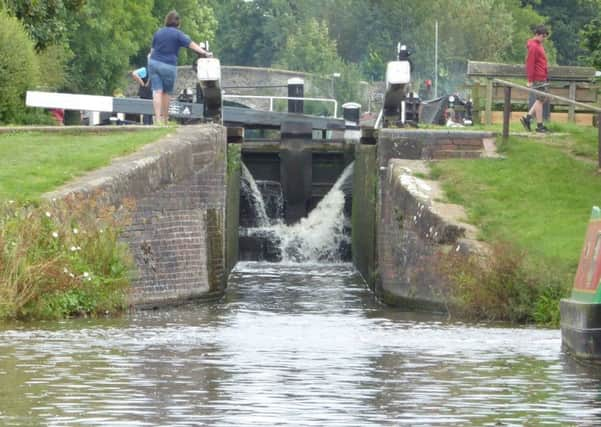On The Wildside


We were now into the Potteries area. A fascinating area, the canal wound its way through Burslem, and Stoke-on-Trent. This for me was the highlight of the trip.
Several Bottle Ovens still stand and the area has been undergoing quite a regeneration. The Dodson Museum owned by the people of Stoke-on-Trent where you can actually step through the oven door itself. Gladstone Pottery Museum in Longham still has its famous chimneys as does Moorcroft. Middleport Pottery at Burslem is one of Britain’s last working Victorian potteries. The canal system served them all.
Advertisement
Hide AdAdvertisement
Hide AdPrior to these factories with their large Chimneys the area produced pottery on a cottage industry scale with several cottages sharing kilns. We passed two of these original much smaller kilns nestled between modern houses and right beside the tow path.
We spent time at The World of Wedgwood Museum and factory. It is a very modern complex but a fascinating museum, exhibiting their wares from the 18th Century right through to the present day. The exquisite Jasper Ware and the 21st century Porcelain Dolls House Advent Calendar in the Georgian style were, to me the most notable.
We had been on our journey for just over a week and passing through Stone we found ourselves in a shallow valley where the River Trent, rail, road and canal all make their way through a succession of small settlements.
Between Aston and Burslem is a nature trail which runs parallel to the canal crossing farmland owned by the Trent Water Authority and chosen for experiments in biodiversity. The pastures surrounding Salt and Salt Heath provide an environment in which a number of salt tolerant plants thrive. Lesser Sea Spurrey and Saltmarsh Rue being two. Snipe, Redshank and Lapwing nest here. Although I did not actually see any I did spot a Grey Wagtail the following day as well as a Dipper.
Advertisement
Hide AdAdvertisement
Hide AdAt the junction at Great Heywood we joined the Staffs and Worcester canal, which follows the River Saw for a short while and then as we traversed south we followed the River Penk.
The following day I watched the dawn break. We then stoked the fire and settled down with the Sunday papers – just like home! The first sign of life on that bright morning was a Blackbird emerging from the base of a hedge to forage. Next was a Moorhen gently moving on the canal.
On the outskirts of Wolverhampton our journey took us back on to the Shropshire Union Canal as we took a northerly direction. At this junction there is a ‘stop lock’ just a few inches deep and so called because when the canals were privately owned by two different companies and therefore two different water supplies.
On our final day our last lock, Weaton Aston lock, was due to be closed for essential repairs from that day but luckily they had not started when we went through! Of all the 50 or so locks that I had operated this was by far the easiest. We were on the last part of the journey and this part of the route is quite familiar to me.
Advertisement
Hide AdAdvertisement
Hide AdThe Heron, Moorhen, ducks, both white and Mallard as well as swans were quietly moving on the water but the most special moment was when we passed a Kingfisher who just sat on a dead branch looking toward the bank so he had his back to us. It was a fitting end to a very interesting holiday.